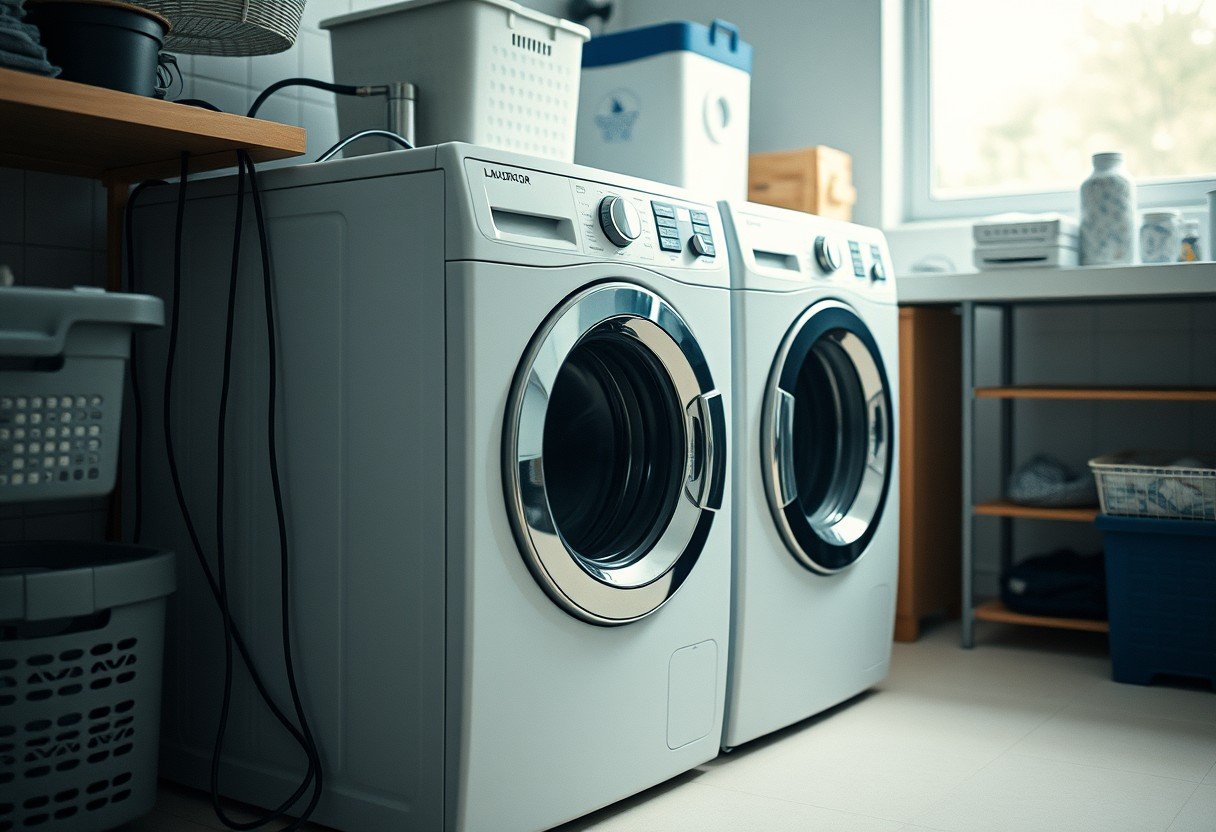Finding cat poop on your floor is frustrating for any pet owner. This unwelcome behavior is your cat’s way of telling you something is wrong. The cause could be a hidden medical issue, stress, or a problem with their litter box setup. Understanding why your cat is avoiding their box is the first step to solving the problem and restoring harmony in your home. This guide will help you identify the root cause and find a practical solution.
First Step: Rule out Underlying Medical Issues
Before you assume the problem is behavioral, it is essential to consult your veterinarian. A sudden change in litter box habits is often the first sign of a medical condition that needs attention. Your cat may associate the litter box with pain and start avoiding it.
Certain health problems can make using the litter box difficult or painful. For example, issues like Inflammatory Bowel Disease (IBD) or colitis can cause sudden urges or discomfort, leading to accidents. Similarly, constipation can make it painful for a cat to hold a squatting position in a confined space.
Even conditions you might not expect, like arthritis or other mobility issues, can be a cause. If your cat has stiff joints, climbing into a high-sided litter box can be a painful task they would rather avoid. A thorough check-up with your vet will help identify or rule out these medical causes, ensuring your cat gets the care they need.
Is the Litter Box the Problem?
Cats are very particular about their bathroom environment. If the litter box isn’t up to their standards, they will find another place to go. What seems fine to you might be completely unacceptable to your feline friend. The location, cleanliness, and even the type of box and litter can all be factors.
Think about it from your cat’s perspective. A dirty, smelly box is unpleasant. A box that is too small won’t allow them to turn around and dig comfortably. Experts recommend having one litter box per cat, plus one extra, to prevent competition and ensure a clean spot is always available.
The location is also very important. Cats prefer quiet, low-traffic areas where they feel safe and won’t be startled. Placing a box next to a loud washing machine or in a busy hallway can make a cat too nervous to use it. Consider these key elements for a cat-approved setup:
- Size: The box should be at least 1.5 times the length of your cat from nose to the base of their tail.
- Cleanliness: Scoop the box at least once a day and completely change the litter every one to two weeks.
- Litter Type: Many cats prefer fine-grained, unscented clumping litter. Avoid scented litters, which can be overwhelming for a cat’s sensitive nose.
Experimenting with different litter types or box styles might be necessary to find what your cat prefers. A simple change can often resolve the entire issue.
How Stress and Anxiety Affect Litter Box Habits
Cats are creatures of habit and are highly sensitive to changes in their environment. A new person in the home, a new pet, a recent move, or even rearranging the furniture can cause significant stress. Pooping outside the litter box is a common way cats express their anxiety.
This behavior, known as middening, is a way for a cat to surround itself with its own scent to feel more secure in a stressful situation. It is not an act of spite, but rather a cry for help. Identifying the source of the stress is key to resolving the behavior.
Creating a stable and predictable routine can greatly reduce your cat’s anxiety. Try to keep feeding and playtime scheduled for the same times each day. You can also increase environmental enrichment with things like cat trees for vertical space, puzzle feeders for mental stimulation, and dedicated play sessions to help them burn off anxious energy.
In some cases, using a feline pheromone diffuser, like Feliway, can help create a sense of calm in the environment and reduce stress-related behaviors.
Territorial Marking with Feces
Sometimes, pooping on the floor has nothing to do with the litter box or a medical issue but is instead a form of communication. Cats use feces to mark their territory, especially when they feel their space is being threatened. This is more common in homes with multiple cats or when a new cat is introduced.
You may notice the feces are left in strategic, highly visible locations, such as near doorways, windows, or on a new piece of furniture. This is a clear signal to other animals. While more common in unneutered males, any cat can exhibit this behavior if they feel insecure.
Resolving territorial disputes involves ensuring each cat has their own resources. This means separate food and water bowls, beds, and litter boxes in different areas of the home to reduce competition. Reintroducing cats slowly or providing more vertical territory like shelves and cat trees can also help them feel more secure.
Proper Cleanup is Crucial to Prevent Repeat Incidents
Once an accident happens, cleaning it up properly is just as important as figuring out the cause. Cats are drawn to eliminate in areas where they can smell their previous waste. If you don’t remove the odor completely, they will likely return to the same spot again and again.
Do not use ammonia-based cleaners, as ammonia is a component of urine and can actually attract your cat back to the area. Standard household cleaners often just mask the scent to human noses but aren’t effective enough for a cat’s powerful sense of smell.
The only way to permanently remove the odor is to use an enzymatic cleaner. These products use enzymes to break down and neutralize the specific proteins in pet waste, eliminating the smell at its source. Follow the product instructions carefully, which usually involves thoroughly soaking the area and allowing it to air dry completely.
Creating a Secure and Cat-Friendly Home
Preventing future incidents often comes down to creating an environment where your cat feels safe, comfortable, and stimulated. A happy cat is much less likely to develop behavioral problems like inappropriate elimination. This involves looking at your home through your cat’s eyes and making adjustments to meet their instinctual needs.
A predictable daily routine for feeding and interactive play can build confidence. Providing plenty of “safe zones” like covered beds or high perches gives your cat a place to retreat when they feel overwhelmed. A stimulating environment helps prevent boredom, which can also lead to stress and unwanted behaviors.
Here is a quick summary of environmental factors to check:
| Environmental Factor | Recommendation for a Happy Cat |
| Litter Boxes | Provide one per cat plus one extra; keep them clean and in quiet locations. |
| Vertical Space | Install cat trees, shelves, or window perches to allow climbing and observation. |
| Play & Stimulation | Engage in daily interactive play sessions and provide puzzle toys. |
| Routine | Maintain a consistent schedule for feeding, play, and attention. |
By addressing your cat’s physical, medical, and emotional needs, you can effectively solve the problem of pooping on the floor and ensure it does not happen again.
Frequently Asked Questions about Cat Pooping on the Floor
Why is my cat suddenly pooping on the floor after years of using the litter box?
A sudden change often points to a new medical problem or a recent environmental stressor. Schedule a vet visit immediately to rule out health issues like arthritis or a digestive disorder. If the vet gives a clean bill of health, consider recent changes in your home, like a new pet or a change in routine.
Will punishing my cat stop them from pooping on the floor?
No, you should never punish your cat for this behavior. Punishing them will only create fear and anxiety, which can make the problem much worse. Instead, focus on identifying the root cause, whether it’s medical, environmental, or stress-related, and address it with positive solutions.
My cat is pooping right next to the clean litter box. What does that mean?
This is a classic sign that your cat wants to use the box but something is stopping them. It could be pain from a medical issue, a dislike of the litter’s texture or scent, or dissatisfaction with the box itself, perhaps it’s too small or has a cover they dislike.
Can changing my cat’s food cause them to poop on the floor?
Yes, a sudden change in diet can lead to digestive upset like diarrhea or constipation, which may cause accidents. Always transition to a new food gradually over 7-10 days. If the problem persists, the new food may not agree with your cat, and you should consult your vet.
How many litter boxes do I really need for one cat?
The general rule is to have one more litter box than the number of cats in your home. For a single cat, this means having two litter boxes. This gives your cat a choice and ensures a clean option is always available if one is occupied or slightly dirty.







Leave a Comment